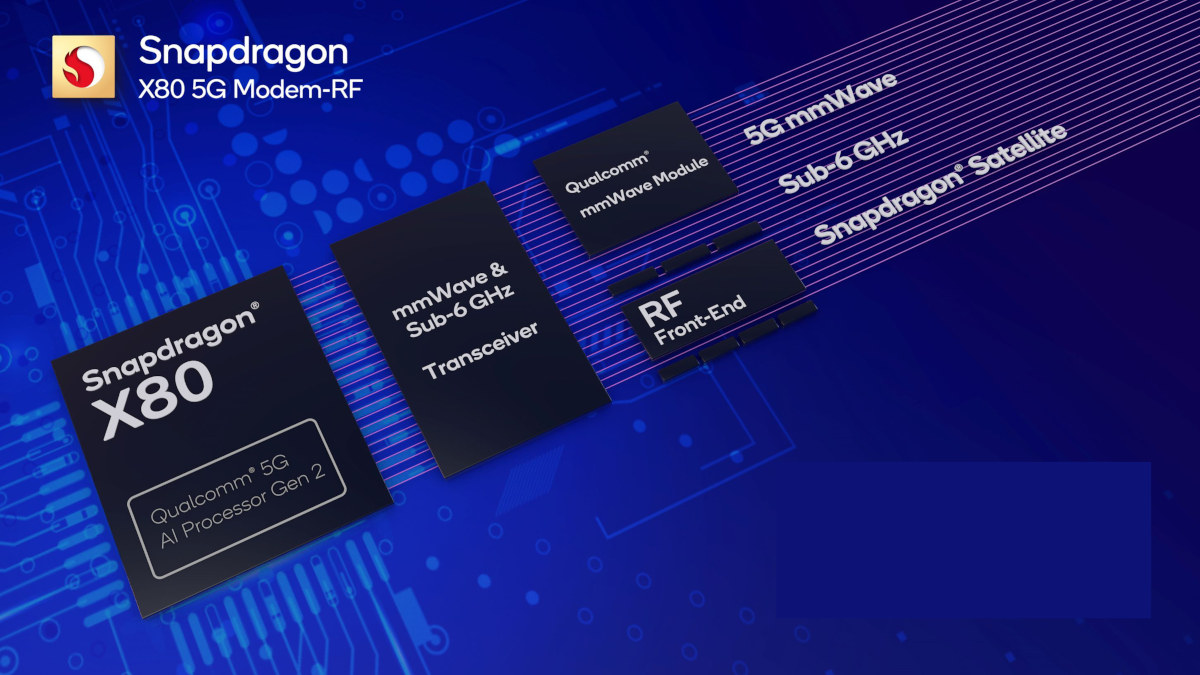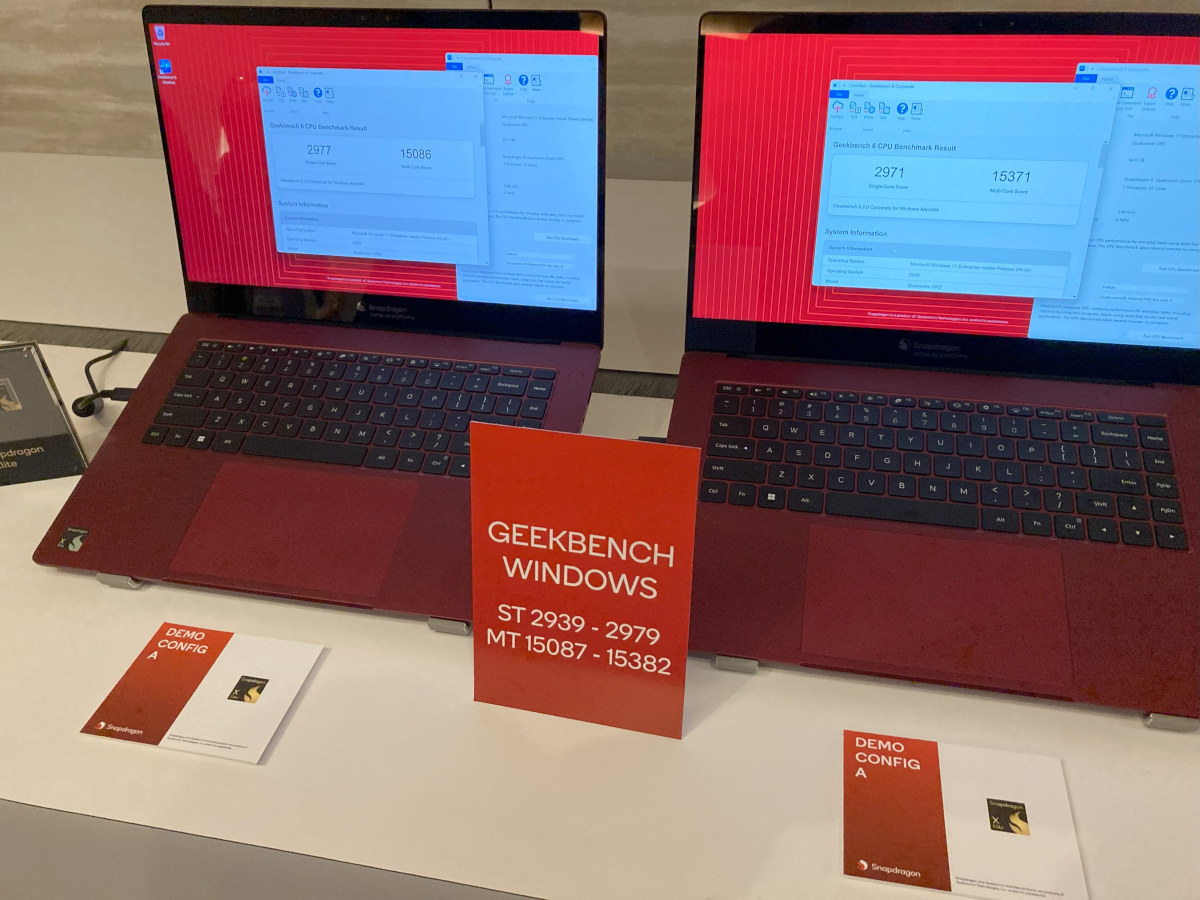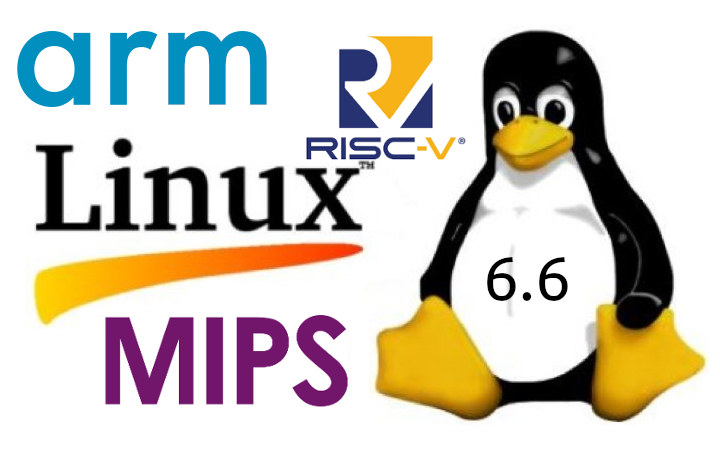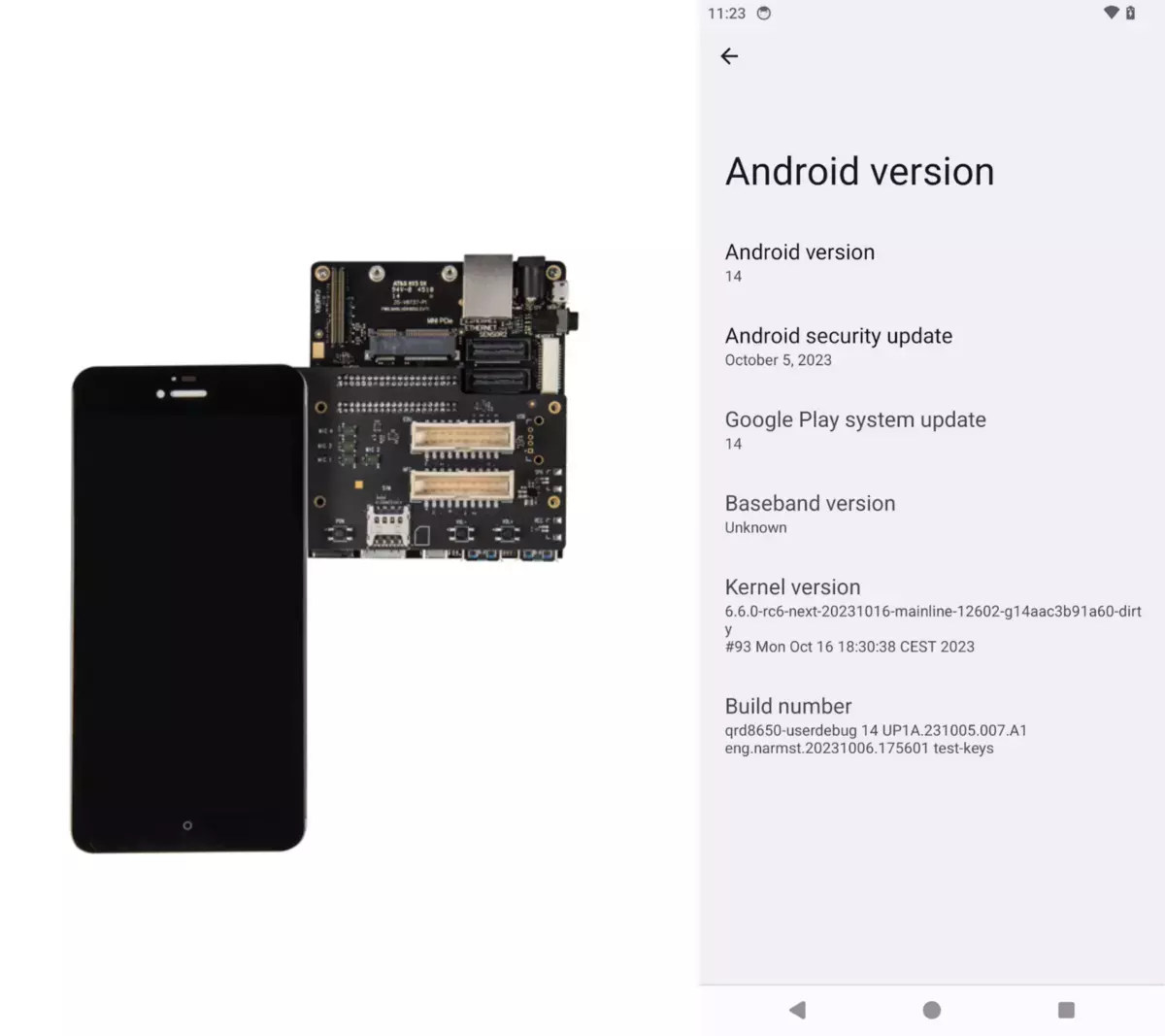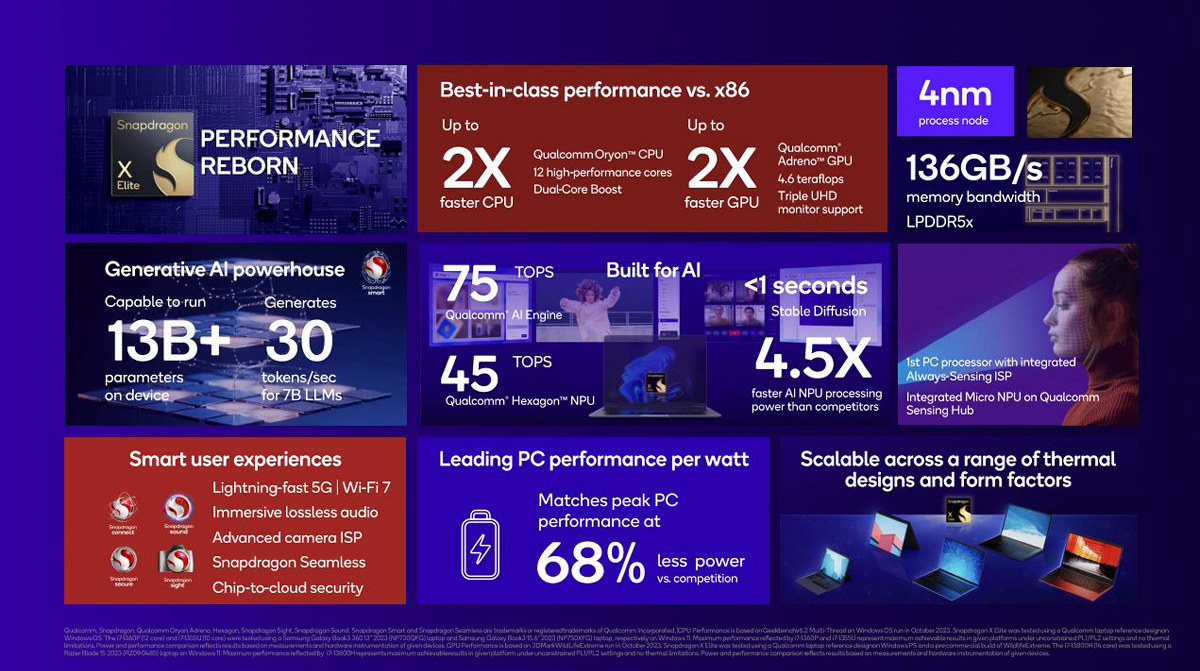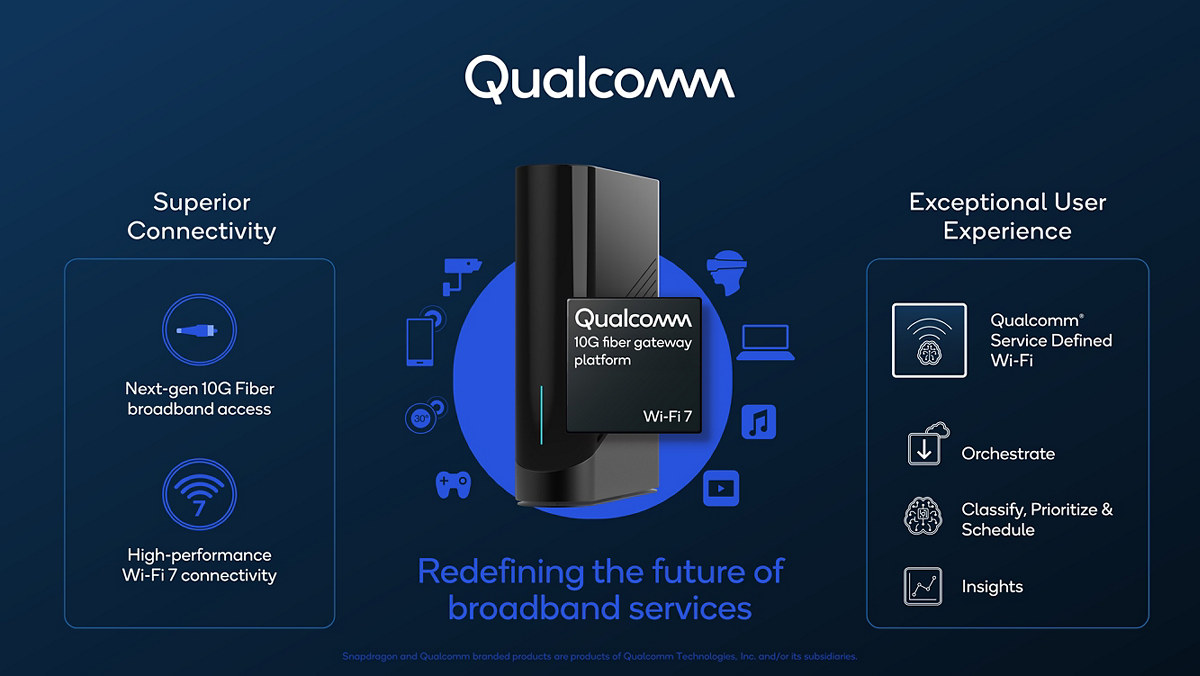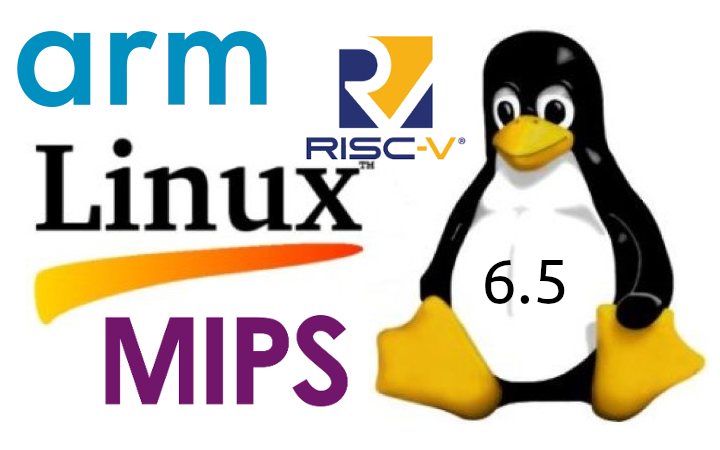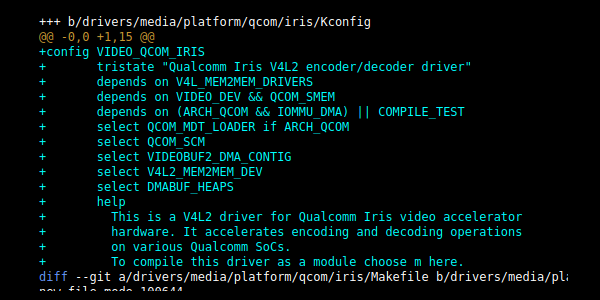Mobile World Congress 2024 (MWC 2024) has just started, and Qualcomm had three major announcements with the introduction of the Snapdragon X80 5G modem with NB-NTN satellite connectivity, the Qualcomm AI Hub with over 75 AI models optimized for Snapdragon processors, and the FastConnect 7900 WiFi 7, Bluetooth, and Ultra Wideband (UWB) chip. Snapdragon X80 5G modem-RF system Snapdragon X80 5G modem specifications: Peak download speed – 10 Gbps Peak upload speed – 3.5 Gbps Cellular Modem-RF Specs – 10CC aggregation in mmWave, 5CC aggregation in 5G sub-6GHz Cellular Technology 5G NR, sub-6 GHz Dynamic Spectrum Sharing (DSS) LTE, WCDMA, LAA, TD-SCDMA, GSM/EDGE, CBRS mmWave, sub-6 carrier aggregation (FDD-FDD) sub-6 carrier aggregation (TDD-TDD), 5G FDD, 5G TDD, sub-6 carrier aggregation (FDD-TDD) 5G SA (standalone), 5G NSA (non-standalone) F + F ULCA, FDD UL MIMO, Switched Uplink, 3GPP R18-ready (5G Advanced-ready), 6x CA sub-6 downlink carrier aggregation, 1024-QAM sub-6, FR1 + […]
Qualcomm Snapdragon X Elite SoC benchmarks in Windows and Linux
Qualcomm unveiled the 4.3 GHz 12-core Snapdragon X Elite processor for laptops last week since some bold claims about the performance and efficiency. The company has now released benchmarks for the processor verified by third parties such as Anandtech and Notebookcheck showing the new Snapdragon processor performance is quite amazing with the Arm processor indeed matching Apple, Intel, and AMD high-end chips. What’s more is that the new SoC was tested in both Windows and Linux (using Geekbench 6.2), so in hindsight, I was wrong to say the Snapdragon X Lite would be a Windows-only processor when only seeing the DX12 listed in the specifications… Before we look into the benchmark results, we should note that Qualcomm provided two versions of the Snapdragon X Elite laptop prototype both using active cooling: “demo config A” high-performance system configured to run at an 80W TDP, and a low-power, thinner “demo config B” […]
Linux 6.6 LTS release – Highlights, Arm, RISC-V and MIPS architectures
The Linux 6.6 release has just been announced by Linus Torvalds on the Linux Kernel Mailing List (LKML): So this last week has been pretty calm, and I have absolutely no excuses to delay the v6.6 release any more, so here it is. There’s a random smattering of fixes all over, and apart from some bigger fixes to the r8152 driver, it’s all fairly small. Below is the shortlog for last week for anybody who really wants to get a flavor of the details. It’s short enough to scroll through. This obviously means that the merge window for 6.7 opens tomorrow, and I appreciate how many early pull requests I have lined up, with 40+ ready to go. That will make it a bit easier for me to deal with it, since I’ll be on the road for the first week of the merge window. Linus About two months ago, […]
Qualcomm Snapdragon 8 Gen 3 gains upstream Linux support
Linaro has announced upstream Linux support for the newly released Snapdragon 8 Gen 3 mobile platform also codenamed SM8650. The patchsets enable Android 14 AOSP to boot with mainline Linux on Snapdragon 8 Gen 3 hardware using Google SwiftShader CPU-based implementation of the Vulkan graphics API. While there is a lot of buzz around the announcement of the Snapdragon X Elite 12-core Arm processor for laptops in recent days, Qualcomm also introduced its latest premium processor with the Snapdragon 8 Gen 3 Mobile Platform for mobile phones featuring a 3.3 GHz Cortex-X4 core, five Cortex A720 Performance cores, and two Cortex A520 efficiency cores, as well as support for generative AI through AI accelerators. The announcement was made on October 25, and Linaro released the patchsets to the Linux Kernel Mailing List (LKML) on the same day. Android devices are often stuck to an older Linux kernel for their entire […]
Qualcomm Snapdragon X Elite – A 4.3 GHz 12-core Arm AI processor for next gen PCs and laptops
Qualcomm has now provided Arm chips for mobile PCs (aka laptops) for several years, but apart from a 20-hour battery life, the performance and price of Snapdragon laptops have often been disappointing. The Snapdragon X Elite aims to change that at least on the performance front. The new Qualcomm 12-core 64-bit Arm processor is clocked at up to 3.8 GHz boosting to up to 4.3 GHz, and is said to deliver up to twice the CPU performance against the competition (Intel/AMD/Apple) or provides the same level of performance at a third of the power consumption. The SoC will also be able to run on-device generative AI with over 13B parameters thanks to 75 TOPS of AI performance and support the latest wireless connectivity technologies such as 5G and WiFi 7 through external chips from the company. Qualcomm Snapdragon X Elite specifications: CPU – 12-core 64-bit Armv8 Oryon processor clocked at […]
Qualcomm 10G Fiber Gateway Platform supports Wi-Fi 7 and “Service Defined Wi-Fi technology”
Qualcomm 10G Fiber Gateway Platform combines 10G Passive Optical Network (PON) technology with Wi-Fi 7 connectivity to deliver 10 Gbps Internet speed to the home. The platform also supports “Service Defined Wi-Fi technology” to enable cloud-to-device quality of service. It seems it was only a few years ago that we talked about 1 Gbps broadband Internet speed, but some companies like Sonic already offer 10 Gbps fiber optic internet to residential customers in the US. That means we’ll need powerful CPEs to deliver 10 Gbps speed to the home and distribute them through the home through multi-gigabit Ethernet and/or WiFi 7, and Qualcomm 10G Fiber Gateway Platform aims to address this market. Qualcomm 10G Fiber Gateway Platform specifications: CPU – Unnamed quad-core processor Passive Optical Network Deployment types: XGS-PON Residential Gateway (HGS/ONT), XGS-PON SFU ONU, XGS-PON SFU+ ONU Peak Downstream Rate: 10 Gbps Peak Upstream Rate: 10 Gbps Wi-Fi Peak […]
Linux 6.5 release – Notable changes, Arm, RISC-V and MIPS architectures
Linus Torvalds has just announced the release of Linux 6.5 on the Linux Kernel Mailing List (LKML): So nothing particularly odd or scary happened this last week, so there is no excuse to delay the 6.5 release. I still have this nagging feeling that a lot of people are on vacation and that things have been quiet partly due to that. But this release has been going smoothly, so that’s probably just me being paranoid. The biggest patches this last week were literally just to our selftests. The shortlog below is obviously not the 6.5 release log, it’s purely just the last week since rc7. Anyway, this obviously means that the merge window for 6.6 starts tomorrow. I already have ~20 pull requests pending and ready to go, but before we start the next merge frenzy, please give this final release one last round of testing, ok? Linus The earlier […]
Qualcomm Iris video decoder & encoder gets Linux V4L2 driver
Qualcomm engineer Vikash Garodia has just pushed a commit to add “Qualcomm Iris V4L2 encoder/decoder driver” to mainline Linux enabling support for H.264, H.265, and VP9 decoding, H.264 and H.265 encoding, as well as M2M and STREAMING capabilities. The Adreno GPUs found in Qualcomm SoC have been supported by the open-source Freedreno driver for several years, but this was not the case with the IP block taking care of hardware video encoding and decoding. The latest patchset addresses this issue for “Qualcomm’s new video acceleration hardware architecture”, meaning it might not work for older Qualcomm processors. The list of features implemented in the Iris V4L2 encoder/decoder driver: Centralized resource and memory management. Centralized management of core and instance states. Defines platform-specific capabilities and features providing a single point of control to enable/disable a given feature depending on specific platform capabilities. Handles hardware interdependent configurations. Handles multiple complex video scenarios involving […]


